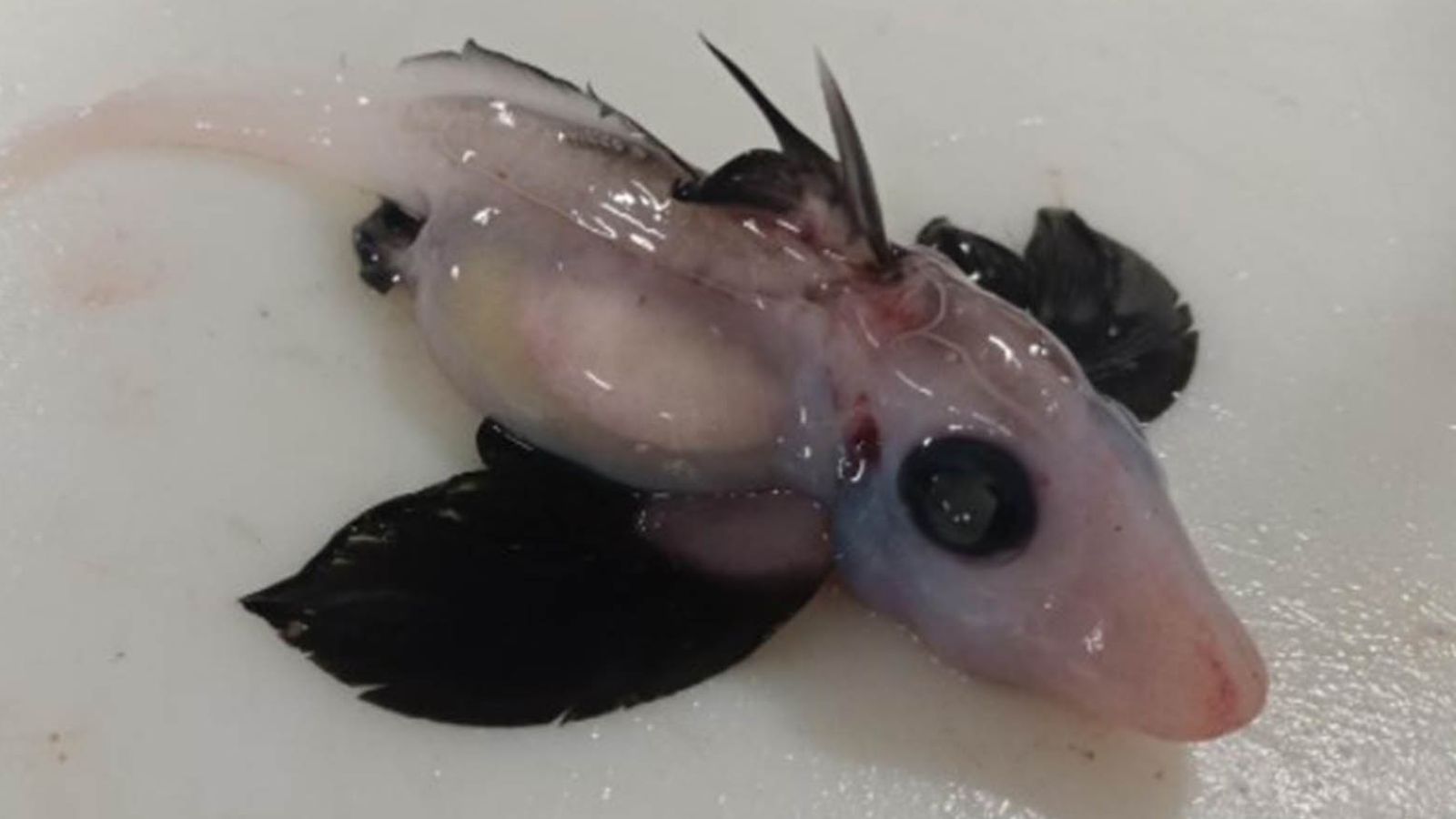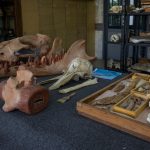A baby ghost shark has been found by scientists off the east coast of New Zealand’s South Island.
The days-old creature, which is also known as a chimaera, was discovered shortly after being hatched at a depth of about 1.2km (0.7 miles) on the Chatham Rise, an area of ocean floor.
Scientists from the National Institute of Water and Atmospheric Research said the deep water shark must have recently been born as its belly was still full of egg yolk.
The embryos of ghost sharks develop in egg capsules laid on the sea floor and feed off a yolk until they become ready to hatch.
The team was carrying out a trawl survey to estimate populations of hoki fish when they discovered the neonate (newly-hatched) animal, which is related to sharks and rays.
Other names for it include rat fish, spook fish and rabbit fish, according to the Shark Trust.
Dr Brit Finucci, a member of the team, said of the very rare find: “It’s quite astonishing. Most deep-water ghost sharks are known adult specimens; neonates are infrequently reported so we know very little about them.”
California: Surfer killed in ‘apparent shark attack’ at Morro Rock on Christmas Eve
Swimmer missing after shark attack off the coast of Western Australia as authorities search the water
Bournemouth beach evacuated after ‘large marine animal’ spotted in water
She told the BBC: “Deep water species are generally hard to find, and like ghost sharks in particular, they tend to be quite cryptic.
“So we just don’t see them very often.”
Young ghost sharks can also change their characteristics when they become adults.
She said: “Juveniles can live in very different habitats, … they can have different diets, they can even look very different from adults.
“Coming across the juvenile helps us better understand the biology and some of the ecology of the species.”
Dr Finucci also said research would be carried out on the baby shark’s species.
She said: “We’ll take a little tissue sample and random genetics.
“Then we’ll do a whole bunch of morphometrics or body measurements as well, which will also help us assess what species we’re looking at.”






















